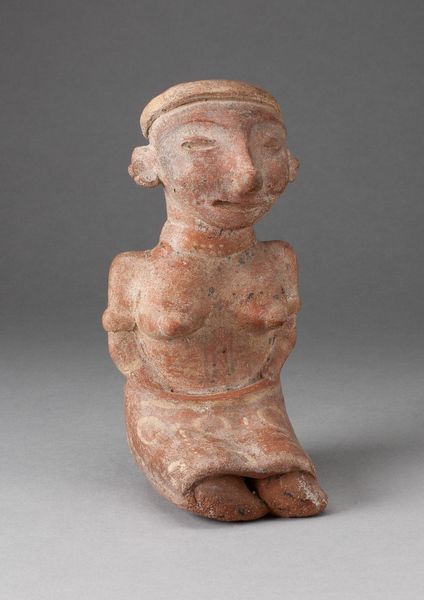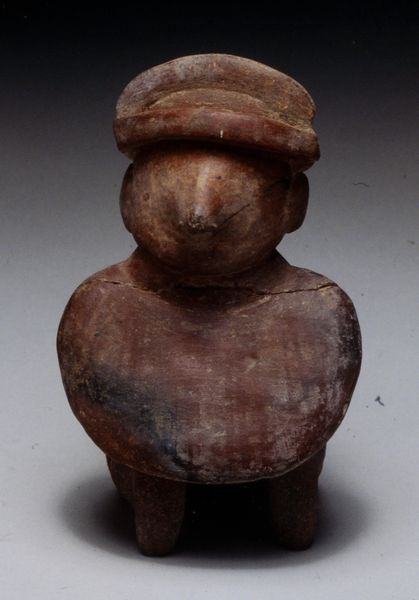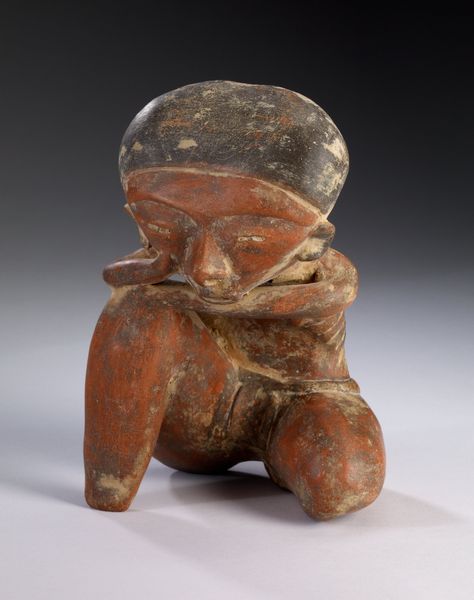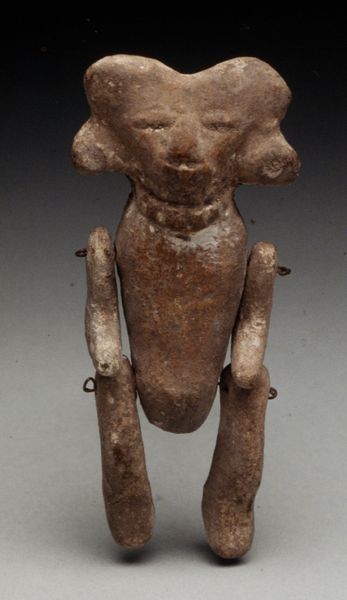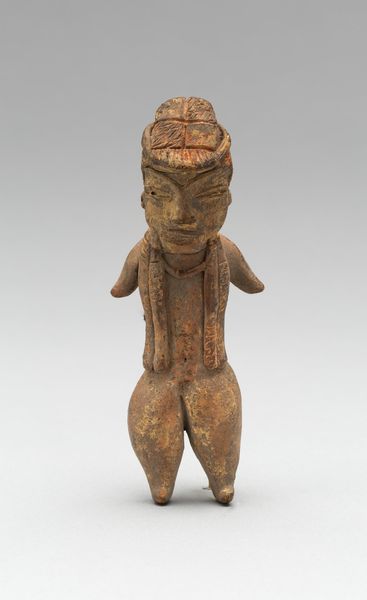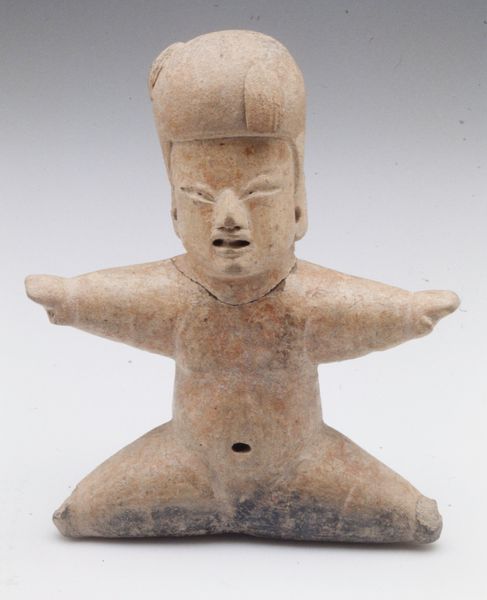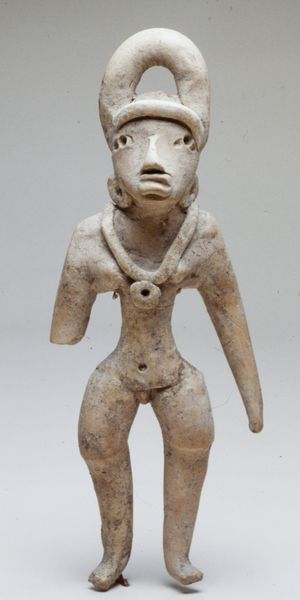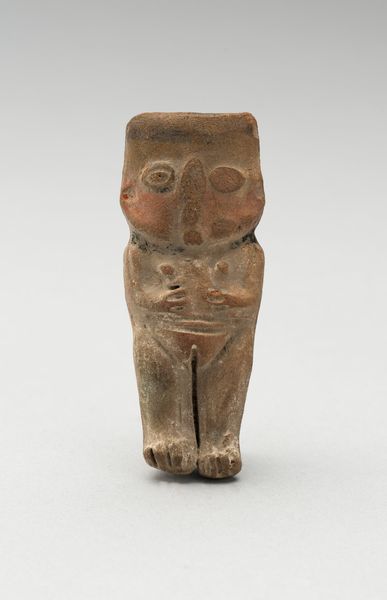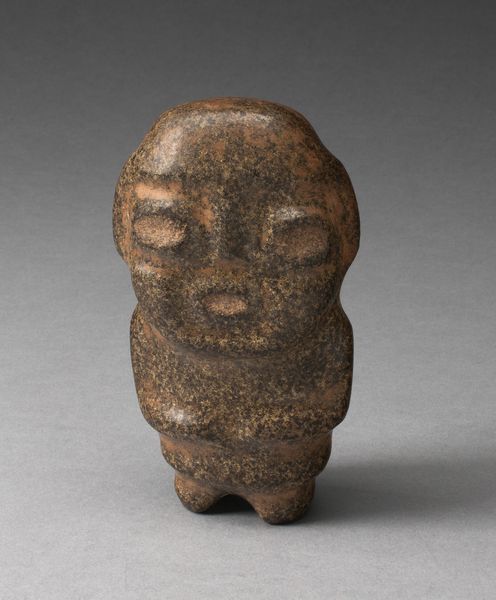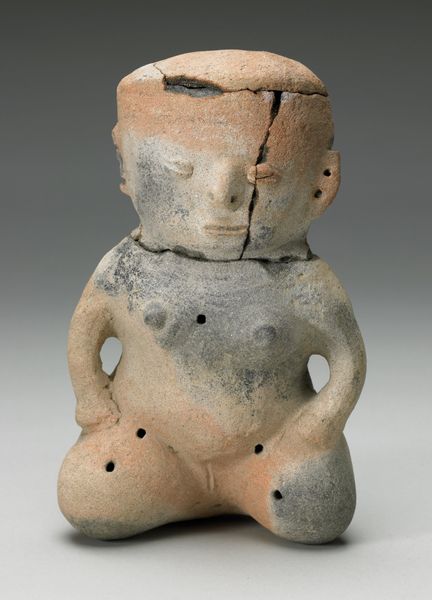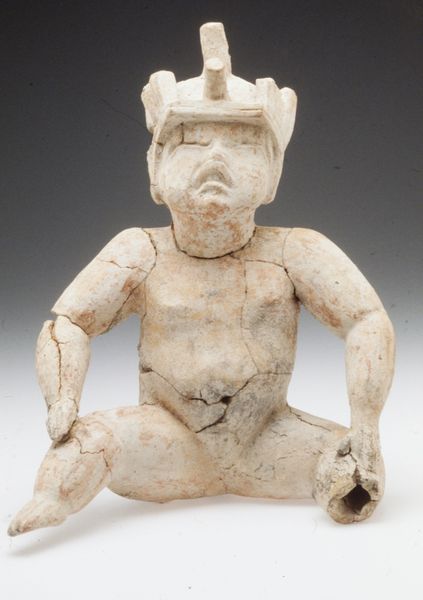
ceramic, sculpture, terracotta
#
portrait
#
stone
#
sculpture
#
ceramic
#
figuration
#
sculpture
#
terracotta
#
statue
#
indigenous-americas
Copyright: Public Domain
Editor: This terracotta sculpture, entitled "Standing male figure," dates back to around 250 CE and originates from the Nayarit culture. It's got a kind of solemn presence, with those closed eyes and simplified features. What can you tell me about it? Curator: Well, thinking about the socio-political role of art, these West Mexican sculptures, particularly those from Nayarit, often functioned as grave goods. The placement of such figures within tombs suggests they were intended to accompany or perhaps even represent the deceased, highlighting the connection between art and ritual practices surrounding death. What does that say about their intended audience versus our contemporary museum context? Editor: So it’s not necessarily meant to be displayed in a gallery as much as be part of a tomb. It definitely gives it another level of context. What were the socio-political reasons to put these specific types of figure in the graves? Curator: The 'portrait' style, while generalized, suggests that the individuals depicted might have been elites or held particular roles within their community. The fact they are memorialized at all shows the societal values attributed to status. Given this function and context, how might this figure shape public perceptions about ancient indigenous communities in the Americas today? Editor: It really adds humanity to the history we are studying. I see it less as this faceless ancient civilization now and more as an actual person with their own place and legacy. Curator: Exactly! And by extension, it highlights the political implications of representing indigenous histories in museums: whose stories are told, how they are framed, and what narratives museums choose to perpetuate, or challenge, through display. Editor: Thanks. I’ll definitely be looking at art with fresh eyes and a whole new set of questions to ask. Curator: My pleasure. Now, what can we learn from other burial figures from around this time period?
Comments
No comments
Be the first to comment and join the conversation on the ultimate creative platform.
